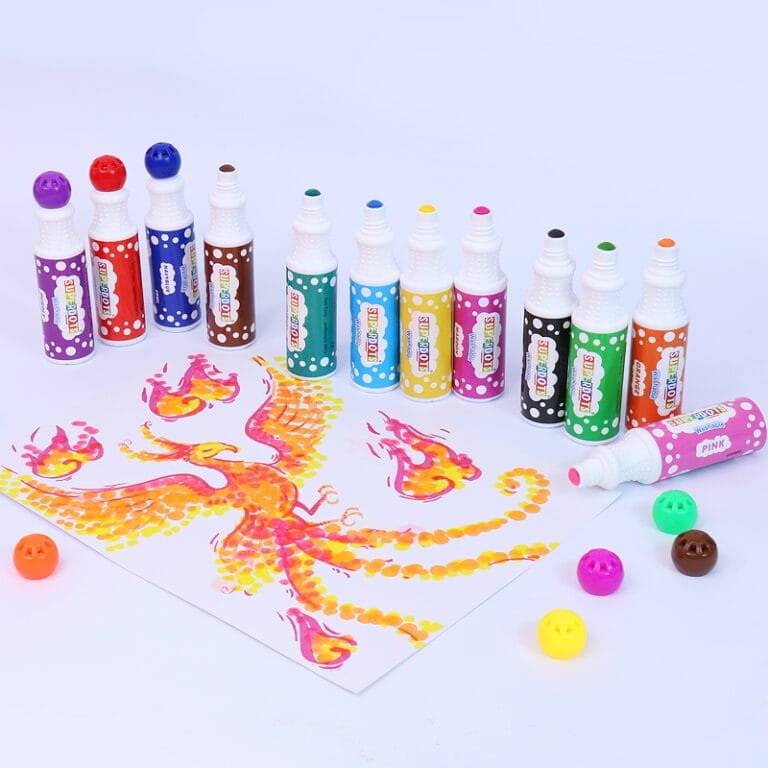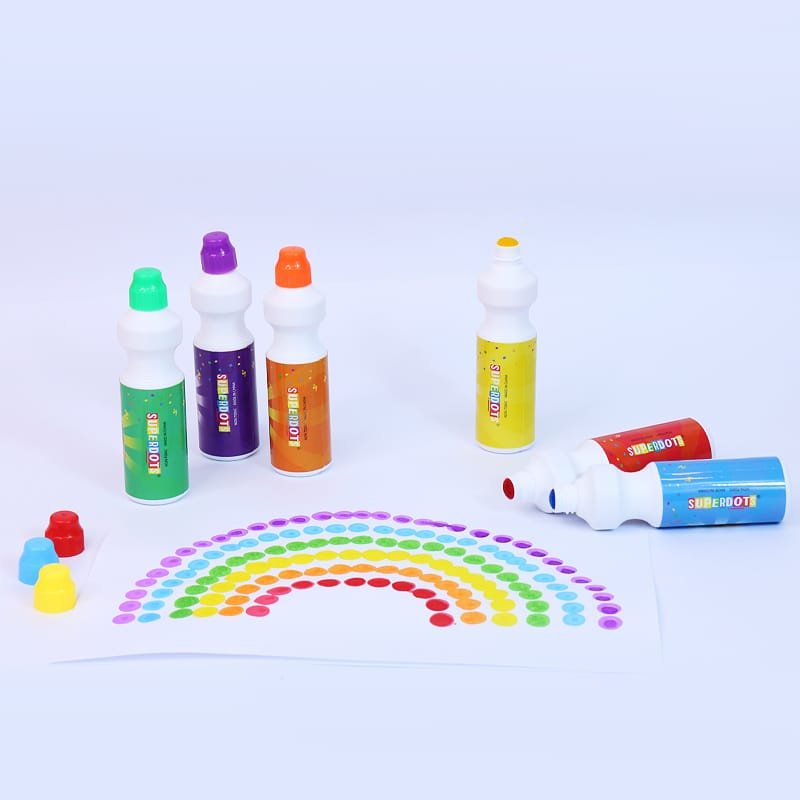When it comes to children’s art supplies, parents and educators have a wide range of options. From crayons and colored pencils to watercolors and dot markers, each tool offers unique benefits. But which one is best suited for young children? In this article, we’ll explore the differences between dot markers and traditional art tools to help you decide which is the best fit for your child.
What Are Dot Markers?
Dot markers are special painting tools designed for kids. They feature a sponge tip and are filled with vibrant, washable ink that allows children to create colorful dots effortlessly. Unlike brushes or pencils, dot markers do not require precise control, making them ideal for younger kids who are still developing fine motor skills. They also encourage creativity by allowing children to experiment with patterns, textures, and colors in a way that feels intuitive and fun.
Key Differences Between Dot Markers and Traditional Art Tools
1. Ease of Use
- Dot Markers: Simple to use—just press down to create a dot. No need for sharpening, dipping in paint, or holding with a precise grip. Even toddlers can handle them with ease.
- Traditional Tools: Crayons, pencils, and paintbrushes require more dexterity and control, which can be challenging for toddlers and preschoolers still developing their motor skills.
2. Mess-Free Creativity
- Dot Markers: Designed to be spill-proof and easy to clean, dot markers minimize mess, making them a stress-free option for parents and teachers. Their quick-drying, non-toxic ink ensures that kids can explore creativity without creating a chaotic workspace.
- Traditional Tools: Paints and brushes can spill, and crayons often break, requiring frequent supervision and cleanup. Some coloring materials can also stain hands, clothes, and furniture, making them less convenient for everyday use.
3. Educational Benefits
- Dot Markers: Help develop hand-eye coordination, encourage creativity, and can be used for educational activities like letter and number recognition, color sorting, and pattern creation. Many educators incorporate dot markers into learning exercises to make lessons more engaging.
- Traditional Tools: Support detailed drawing and writing skills, making them more suitable for older children developing advanced motor skills. They are excellent for fostering artistic techniques like shading, blending, and perspective drawing.
4. Safety and Child-Friendliness
- Dot Markers: Often non-toxic, washable, and designed for young children, making them safer for little ones who might put objects in their mouths. The design prevents spills and eliminates the risk of small parts breaking off.
- Traditional Tools: Some require extra caution, such as sharpened pencils, paintbrushes with wooden handles, or paints with potential allergens. Parents and teachers need to ensure that young children use these materials under supervision.
5. Versatility and Fun Factor
- Dot Markers: Can be used for unique art projects, such as stamping, patterns, and blending colors in a fun and engaging way. They are especially popular for themed activities like holiday crafts, nature-inspired art, and interactive worksheets.
- Traditional Tools: Allow for intricate designs and precise control but might not be as exciting for toddlers. However, they provide essential tools for refining artistic techniques as children grow older.
Which One Is Best for Your Child?
If you have a toddler or preschooler, dot markers are an excellent choice due to their ease of use, mess-free application, and ability to develop motor skills. They make learning and creativity fun while keeping frustration to a minimum. Dot markers are also a great way to introduce young children to artistic expression without requiring advanced control.
For older children, traditional tools like colored pencils and paintbrushes may be better for advancing their drawing and writing skills. These tools allow for greater precision, helping kids explore different artistic techniques and expand their creative abilities.
Final Thoughts
Both dot markers and traditional art tools have their place in a child’s creative journey. Dot markers are perfect for introducing young children to art, while traditional tools help refine their artistic abilities as they grow. The best approach is to provide a combination of both, allowing children to transition from simple, fun-filled dot art to more advanced artistic techniques over time.
By choosing the right tool for your child’s age and skill level, you can nurture their creativity in a way that is both enjoyable and developmentally beneficial.
Looking for high-quality dot markers for kids? Check out our collection at www.dotmarkersupply.com and let your little artist explore their creativity today!



